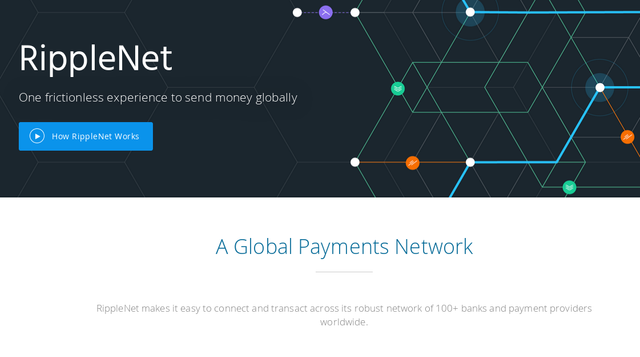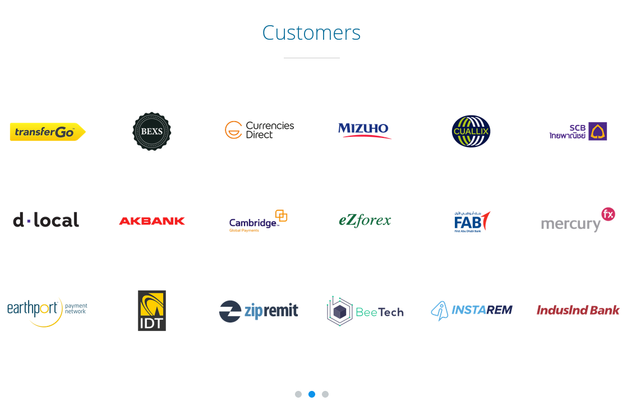Metaphors in cryptocurrency advertising

Cryptocurrencies and blockchain technologies have the difficult task of informing and educating a wide variety of target audiences about a new and complex ecosystem of technologies that most people are unfamiliar with.
“If it takes longer than 10 seconds to describe your product, then you have a high probability of losing a large portion of your audience,” goes the common mantra of experienced marketers.
Advertisers typically try to condense their products down to simple text and visual metaphors. For example, if the ad uses straight-forward descriptive language, then it will use metaphorical images. If an ad uses straightforward images, then it will use metaphorical language. (Bougher, 2018).
Considering that cryptocurrencies and blockchain technologies are essentially computer programs running on various types of computer hardware, then displaying the products visually is not even a logical option in most cases.
Ads are also categorized as either hedonic or utilitarian.
*“Hedonic products are pleasure oriented and consumption is primarily induced by the de- sire for sensory experience, fantasy, and fun. Products with such characteristics can cause consumers to experience a feeling of self-indulgence and pleasure. In contrast, utilitarian products appeal to the rational side as functional and down-to-earth, offering cognitively oriented benefits. Utilitarian consumption results in less sensual pleasure. Generally speaking, a hedonic product speaks to the heart while a utilitarian product speaks to the head.” (Chang & Yen, 2013)
Cruise lines, beer, and luxury cars are easily hedonic ads, where appliances and power tools are more utilitarian by nature. Let's take a look at a few cryptocurrency ads:
Contrary to popular opinion, cryptocurrency/blockchain ads are rarely hedonic over utilitarian. For instance, they don’t advertise themselves as “get rich quick schemes." The marketing is decidedly utilitarian in language, with metaphorical images that attempt to distill the complexity into something simple for the target audience to understand.
Some have argued that cryptocurrency advertising itself promises to do things that are impossible with current technology, and are selling “pipe dreams” or “vaporware” to entice naive investors to part with their money. Those critics would say that the technology will never really mature into something usable or marketable.
Many cryptocurrency projects tout their corporate partnerships to display their legitimacy to a wary public. For example, Ripple (XRP) boasts over 100 partnerships with a variety of financial remittance corporations including Moneygram and American Express.


Ripple doesn’t promise to be “all things to all people” like Ethereum, but instead positions itself as “a frictionless experience to send money globally.” Everyone can understand that, and I’m sure that has helped them gather so many corporate partnerships.
It is undoubtedly the hype generated by the hyperbolic growth that motivates the average new investor to consider buying cryptocurrency. Consider this, as of Sept. 20, 2018, Ripple value climbed +55% in 7 days.

(image courtesy of coingecko.com)
Experts in finance and technology are excited because they believe that this technology can make secure international payments in 6 seconds or less. Investors are excited because they see the opportunity to benefit from rapid growth as Ripple expands.
In the next example, you will notice the Filecoin website contains the plain technical description of their service geared mostly for professionals in the data center, cloud storage, or other tech career field. Their 5-minute promo video does the opposite. The video is full of metaphorical imagery and language that describes their intention to “upgrade the internet,” and make it more secure and available.
Contrast this tactic with a video from Maidsafe that takes a confrontational approach to both personal data acquisition by the big tech companies and government surveillance.
A casual viewer might not notice that both companies are marketing very similar products and concepts, but framing them completely differently. They also each use very different metaphors to appeal to their audience. The Maidsafe ad uses political metaphors appealing to privacy advocates who favor net neutrality, while Filecoin avoids that political conversation all together.
Metaphors can also constitute the underlying belief systems of conservative versus liberal ideologies in the United States to provide heuristic shortcuts to decision-making. (Lakoff, 2002)
”Metaphor as a cognitive mechanism enables citizens to make sense of the political world by drawing from previous knowledge and experience in nonpolitical domains. Because metaphors shape and constrain understanding by framing it within existing knowledge structures, they generate important predispositions. As a result, the study of metaphor offers an opportunity to enrich our descriptive understanding of the political cognition of citizens.”(Bougher, 2018)
In the examples above, Maidsafe’s ad campaign is attempting to position itself in the liberal/libertarian camp of data security and privacy. Traditionally, the conservative political spectrum is more willing to give up individual civil liberties related to personal data and privacy in support of law enforcement or national security.
It should come as no surpise that government agencies tasked with regulating finance and the internet are steadfastly opposed to the idea of an internet they can not freely monitor. They rely on techniques that can involve mining internet data to combat cybercrime, terrorism, drug trafficking, and child porn in order to catch those criminals.
Below is an excerpt from the FBI website in 2011:
“In order to enforce the law and protect our citizens from threats to public safety, it is critically important that we have the ability to intercept electronic communications with court approval. In the ever-changing world of modern communications technologies, however, the FBI and other government agencies are facing a potentially widening gap between our legal authority to intercept electronic communications pursuant to court order and our practical ability to actually intercept those communications.” (Valerie Caproni,General Counsel, FBI, 2011)
This political battle is currently not in the mainstream consciousness of most Americans, most of who associate Bitcoin with the “Dark Web” but have not been exposed to the wider decentralization and privacy debate. Some forecast that this debate could eventually steamroll into a new constitutional debate over the 4th Amendment.
“Amendment IV: The right of the people to be secure in their persons, houses, papers, and effects, against unreasonable searches and seizures, shall not be violated, and no Warrants shall issue, but upon probable cause, supported by Oath or affirmation, and particularly describing the place to be searched, and the persons or things to be seized.”
In contrast to the examples above, some blockchain technologies, like Civic, seek to move identity management to the blockchain in a way that secures privacy, but allows encrypted data to be shared between consenting parties.
The cryptocurrency and blockchain world has many fresh and interesting ideas that the general public will eventually become more accustomed to hearing about. It is certain that it will be a marketplace of ideas that will disrupt legacy technologies and political ideologies while attempting to win the public’s favor.
About:
Michael Meyer conducts graduate research at the Zimmerman School of Advertising for Mass Communications at the University of South Florida. He earned his Bachelor’s degree in multimedia journalism and production from USF in 2005. This blog focuses on various aspects of mass communications research and practice, and relates these findings to the many current technological shifts that are impacting communicators; including social media, data mining, and the emerging field of blockchain technology.
Sources:
Bougher, L. D. (2012). The case for metaphor in political reasoning and cognition. Political Psychology, 33(1), 145-163.
Chang, C. T., & Yen, C. T. (2013). Missing ingredients in metaphor advertising: The right formula of metaphor type, product type, and need for cognition. Journal of Advertising,
Lakoff, G. (2002). Moral politics: How liberals and conservatives think. Chicago: University of Chicago Press. Lakoff,
McQuarrie, E. F., & Phillips, B. J. (2005). Indirect persuasion in advertising: How consumers process metaphors presented in pictures and words. Journal of advertising, 34(2), 7-20.
Congratulations @cryptoeditor! You have completed the following achievement on the Steem blockchain and have been rewarded with new badge(s) :
Click on the badge to view your Board of Honor.
If you no longer want to receive notifications, reply to this comment with the word
STOPCoins mentioned in post: